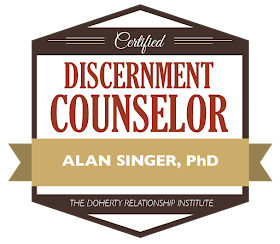No words can adequately express our
collective sadness and revulsion over the events that occurred in Israel over
the last three months. Trauma is defined as a deeply distressing or disturbing
experience. Emotional and psychological trauma is the result of extraordinarily
stressful events that destroy a sense of security, making an individual feel
helpless and vulnerable in a dangerous world. Traumatic experiences often
involve a threat to life or safety, but any situation that leaves a person
feeling overwhelmed and alone can be traumatic, even if it does not involve
physical harm. “It is not the objective facts that determine whether an event
is traumatic, but a subjective emotional experience of the event” (Dr. Dawn
Apgar).
Initial reactions to psychological trauma
can include confusion, sadness, anxiety, and blunted affect. Indicators of more
severe responses include continuous distress without periods of relative calm,
severe dissociation symptoms, and intense intrusive recollections that continue
despite a return to safety (a.k.a. catastrophizing).
Immediate emotional reactions include
numbness, anger, helplessness, and denial. Delayed emotional reactions include
depression, vulnerability, and anxiety. Similarly, immediate physical reactions
include nausea, sweating, shivering, and extreme fatigue. Delayed physical
reactions include sleep disturbances and lower resistance to colds and infection.
Trauma can also affect one’s beliefs about
the future in terms of loss of hope, limited expectations about life, and fear
that life will end abruptly. There are also existential reactions to trauma such
as despair about humanity (particularly if the event was intentional as was the
October 7th terrorist attack on the citizens of southern Israel).
The trauma can also include an immediate disruption of life assumptions such as
fairness, safety, goodness, predictability of life, and God’s protection from
harm.
Perhaps the worst reaction is hopelessness
which is a feeling that the situation will never improve. I recall asking the revered
Rabbi Abraham Twerski MD z’l, if he worried about conveying a false sense of
hope to trauma victims in his books and lectures and he responded, “I am much
more apprehensive about conveying a false sense of despair.”
Seven Ways to Manage Your Feelings and Self-Care
The first step is to recognize and accept your feelings as adequate responses to extreme and abnormal circumstances.
Seek support; look for someone who is able to provide a compassionate response.
Limit media consumption. While it is tempting to seek out any information and news, the repeated viewing of tragic and horrifying images is not only extremely harmful but it is slow to fade from memory.
Maintain a regular schedule and take time-out as needed.
Try to avoid getting to a point of feeling overly hungry, angry, lonely, or tired as at those points, you are more at risk for feeling overwhelmed.
Tikkun Olam! Do good things! Give Tzedakah, engage in prayer, and send vital supplies to the IDF or to displaced families. These powerful actions help alleviate trauma. “Remember, if you are having difficulty coping, it is not an indicator of your weakness, but rather a sign of your humanity” (Ohelfamily.org).
Seven Tips to Avoid Catastrophic Thinking
Catastrophizing is when a person fixates
on the worst possible outcome and treats it as likely, even when it is not.
1.
Acknowledge
that unpleasant things do happen
2.
Recognize
irrational thoughts
3.
Say “STOP” to break the stream of thoughts
and help change your thinking
4.
Think
about a positive outcome rather than a negative one
5.
Offer
positive affirmations on a daily basis
6.
Practice
cognitive behavioral therapy (CBT), recommended by mental health experts as
being effective in this area.
7.
Practice
excellent self-care plus stress relief techniques such as: meditation,
mindfulness, and journaling (R. Nall, MSN).
Phrases That Help Trauma Survivors: Seven Suggestions
This last group of seven tips should assist
you in preparing for how to speak with trauma survivors. Your relationship with
a survivor can have a positive impact on their recovery, so it helps to know
what to say and what not to say.
Instead of “You need to talk about it” try
“I’m here to listen if you need to talk.”
Instead of “Things will get better” try “I
see and hear that you’re in pain.”
Instead of “It’s time to move on” try “I’m
here for you.”
Instead of “Let me help you” try “How can
I help you?”
Instead of “This made you stronger,” try
“This has impacted you considerably.”
Instead of asking “Why didn’t you tell me
sooner?” try “Thank you for trusting me”.
Instead of trying to be inspiring and
profound, just say nothing.
Sit with them in silence (Amanda Gregory, LCPC).
Let us stand united in our prayer for an
end to the loss of life in Israel and the safe return of our soldiers and
hostages.
Dr. Alan Singer has
been a marriage therapist in New Jersey and New York since 1980 with an 80%
success rate in saving marriages on the brink of divorce. He is an Adjunct
Professor for the Touro University Graduate School of Social Work and
is a Certified Discernment Counselor. He blogs at FamilyThinking.com
and serves on the National Registry of Marriage-Friendly
Therapists and the Beyond Affairs Network. He authored the book, “Creating Your
Perfect Family Size” (Wiley). His mantra is: I will be the last person in
the room to give up on your marriage! dralansinger@gmail.com (732)
572-2707








 Saving Marriages Strained By The Recession
Saving Marriages Strained By The Recession Does size matter? For today's families it does
Does size matter? For today's families it does Shaky Economy Means Bye-Bye Baby for Some
Shaky Economy Means Bye-Bye Baby for Some

